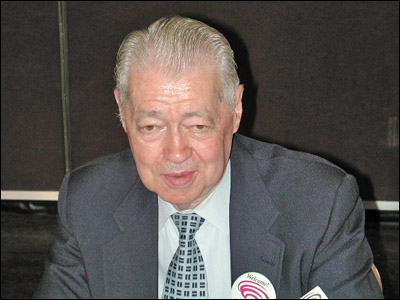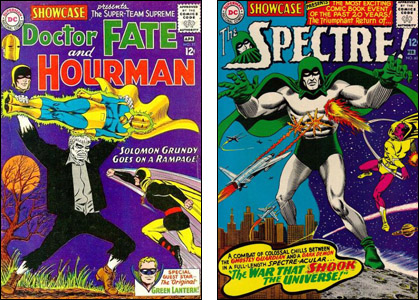
Another great comic book artist of the past has left us. Murphy Anderson has died at the age of 89. No details as to the cause but he'd been in poor health and declining convention invites for some time now.
Murphy hailed from Asheville, North Carolina where he was born on July 9, 1926. He got into comics in 1944 drawing for Fiction House, doing work that was so polished that in 1947, he moved over to draw the Buck Rogers newspaper strip for two years. He worked for several companies before finding a home at DC Comics around 1950. Apart from brief stints away when he worked for Will Eisner on PS Magazine (an army publication) and later when he produced that magazine himself, he worked pretty much exclusively for DC as long as he could. When he found his output slowing in later years, he began shifting his attention to his own company, Murphy Anderson Visual Concepts, and doing color separation work and other technical chores in comic book production.
He was best known for his work at DC where he was often employed as a kind of utility player, able to handle any position. He frequently worked in the office so he was called upon to do rush covers and ink jobs, to retouch the artwork of others and to work on merchandising art. At times, the DC staff could be very fussy how Superman, Batman and their other superstars were drawn but Murphy was a guy who always drew them "on model."
Murphy produced fine work when he penciled and inked, especially on features of a science-fiction nature like The Atomic Knights or Captain Comet in Strange Adventures. He did a long stint drawing Hawkman, and did the early issues of The Spectre when that feature was revived in the sixties. He also did finished art on hundreds of covers, mainly for Julius Schwartz, the editor with whom he was most closely associated. His style often reminded one of one of his artistic heroes in comics, Lou Fine.

At times though, DC deployed him as an inker. He inked some of their best artists like Carmine Infantino, Gil Kane and Curt Swan — and many fans would tell you that the work of those men never looked better than when "Murph" did the inks — though oddly, neither Infantino or Kane were happy with the mesh of styles, perhaps because Murphy was more of an artist than a tracer. DC also sometimes used him when there was a weak pencil job that needed a lot of fixing. Murphy was the guy who could do anything.
He was an absolutely charming man, gifted not only with artistic talent but a deep, rich speaking voice and a penchant for groan-inducing puns. In the office or at a convention, he was always impeccably dressed in a suit and tie. At the conventions, which he loved doing, he was usually accompanied by his loving wife, Helen, and fans came to love her as much as they loved Murphy. And they loved Murphy a lot. We all did.